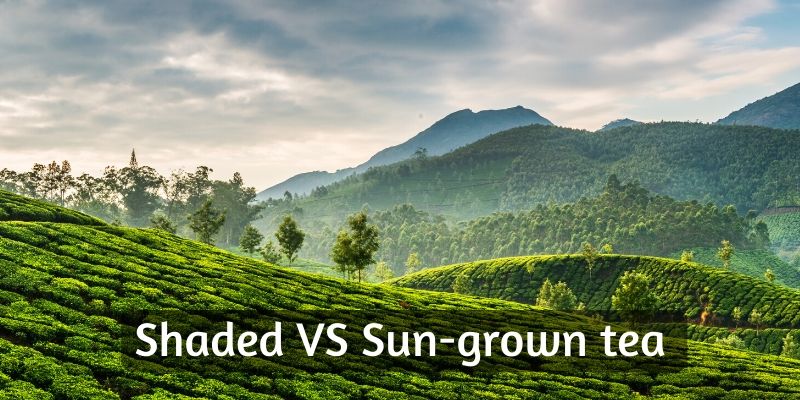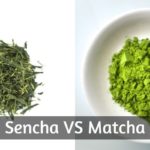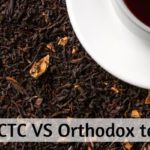We keep hearing about sun grown and shade grown tea. But what really happens when you grow tea in the shade ?
And how do you even shade an entire farm ?
Is it worth it ?
We're going to discuss exactly that, and compare sun grown and shade grown tea today, so let's get into it.
Table of Contents
What is sun grown tea ?
Sun grown tea is the most common way of growing tea. So common in fact that often you won't even find it mentioned on the tea pack.
All this means is that the tea plant is grown under the open sky, just like any other crop.
It grows and is harvested under the sun, and it's how nearly every tea in this world is made - green, black, white, whatever you have in mind.
What is shade grown tea ?
Shade grown tea is different. It's grown under the open sky too, in its first couple of weeks.
Then, for about 3 weeks the entire plant - well, the entire row -is covered with something that will completely block out the sun.
This is done in various ways, like a tarp or a few straw panels or something similar.
Once the tea has been shaded enough and has grown, it's ready to be harvested.
What does shading do to a tea plant ?
The whole point of shading the tea plant while it grows is to develop two things: chlorophyll - the green pigment - and caffeine.
Well, the plant has both to begin with, but shade growing makes the tea plant produce them in a greater amount.
The chlorophyll because it's one of the way the plant digests nutrients, and the sun is the main food. So, less sun means more chlorophyll, so the plant can feed.
And extra caffeine to keep the plant protected better, it's a natural defense system.
The overall result of this process is a greater taste, and a noticeably less astringent tea.
This process is only applied to plants meant to be green tea, by the way.
Main differences between sun grown and shaded tea
Alright, now let's talk about the main differences between shaded and sun grown tea.
It might not sound like it, but these are things that change the tea a whole lot. Knowing them and how they influence your cup of tea is in your interest.
1. Shade grown tea is more vibrant, and better tasting
There is a definite taste difference between shade grown tea and sun grown tea.
Think of it like the difference between Matcha and regular green tea.
Matcha is a shade grown tea, the best actually. And as a representative of shaded tea, it's flavorful, meaning umami, with a very deep note and even a hint of sweetness towards the end.
The sweetness is more like a buttery sweetness, the same way a milk can be sweet due to fat content.
Shaded tea does not have more fat content, but the flavor is similar.
On the other hand, sun grown tea is more astringent, and a little plainer in flavor.
It's what you get most of the time when you order green tea. Unless you specifically order Gyokuro or Tencha - both shaded tea, and closely related to Matcha.
2. Sun grown tea is the original, easier method
Growing tea in the sun, just like any other plant, is the original way to do it.
It's simple, with very little fuss and the tea comes out good.
Shading the tea does improve flavor, but it makes things more complicated. Judging when to shade the tea, when to uncover it, and how much to move the coverings each day is a lot of work.
Not to mention actually, physically doing all that work.
So, shaded tea is more labor intensive, and requires a whole lot of work.
This is the main reason shaded tea is always more expensive than regular, sun grown tea.
Another item to drive the price up is the definite improvement in flavor, so you're going to be paying extra but it's definitely worth it.
3. Shade grown tea is usually high-end Japanese tea
When getting shade grown tea, you'll notice that it's Japanese tea.
The most common and well known shaded green teas are Matcha, Gyokuro, and Tencha.
Tencha is the leaf used for Matcha, right before it has any stems or veins removed.
It can either turn into powdered Matcha, or be twisted into strips for Gyokuro.
All 3 are wonderful teas on their own, and they will always outshine a regular green tea.
They're also the only ones to produce an actual green liquor when brewed.
All of these traits combined make them some of Japan's finest, high-end green tea available.
By comparison, a regular green tea isn't as expensive but can still be high-end. It's just going to be different.
If you're looking for an example of Japanese sun grown tea, you might want to look up Sencha - that's the general term for regular green tea.
4. Sun grown tea can be any tea type you want
Growing tea in the sun, the regular way, has it's perks.
The main one is that the tea leaves can become any tea at all, since there isn't a change in flavor.
So you'll find that black, Oolong, Pu'erh teas are all made with sun grown tea leaves. This is because they need to be oxidized, and shading them would change the flavor too much.
Meanwhile, green tea can be both sun grown and shaded, and white tea may be found as a shade grown tea, though that is rare.
Conclusion
The way the tea plant is grown is going to impact the overall flavor if the tea.
This is why a shaded tea is always going to taste better - no astringency, less bitter - than a sun grown tea. But both are great in their own way, and there's plenty of market demand for both.
I hope this article helped you distinguish between he main differences, and may even help you better understand them
If you want to know more about coffee or tea, feel free to check the related articles below. Who knows what else you might find ?








